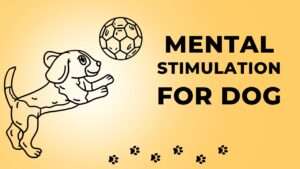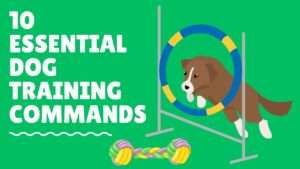Are you considering bringing a furry friend into your life? Perhaps you’re already a dog owner looking to understand your companion better. One crucial aspect to consider is a dog’s trainability. How easily can they learn commands and behaviors? Let’s delve into the fascinating world of canine trainability to help you make informed decisions and foster a harmonious relationship with your four-legged friend.
Contents Overview
Preliminary Summary
Embarking on the journey of training your furry friend? Here’s what you need to know to ensure success and foster a strong bond with your canine companion. Understand that factors like breed, temperament, age, and motivation significantly influence your dog’s trainability. Keep an eye out for signs such as quick understanding, willingness to please, consistency, and focus during training sessions to gauge progress. While certain breeds, like Border Collies and Golden Retrievers, excel in obedience training, others may require more patience and tailored approaches. Employ effective training techniques such as positive reinforcement, consistency, patience, and clicker training to shape desired behaviors. Don’t let challenges deter you—address behavioral issues with positivity and seek professional guidance if needed. Above all, embrace the journey as an opportunity for mutual learning and growth, strengthening the bond between you and your beloved furry companion.
What is Trainability?
Trainability refers to a dog’s capacity to learn and respond to commands and cues from their owner or trainer. It encompasses a range of factors, including intelligence, temperament, breed characteristics, and individual personality traits.
Factors Affecting Trainability
Have you ever wondered why some people seem to pick up new skills effortlessly while others struggle to grasp even the basics? The answer lies in the fascinating realm of trainability – the capacity to acquire and improve skills through training and practice. But what are the factors that influence this trainability? Join us on a journey as we uncover the key elements that shape your ability to learn and excel in various domains.
The Influence of Genetics
Genetics lay the foundation for a dog’s trainability, shaping their temperament, intelligence, and behavior. Certain breeds are predisposed to excel in obedience training due to selective breeding for specific traits. Factors such as breed instincts, genetic predispositions, and lineage play a significant role in determining a dog’s aptitude for learning.
- Breed Characteristics: Different breeds exhibit varying levels of trainability. For instance, herding breeds like Border Collies and German Shepherds are renowned for their intelligence and eagerness to please, making them highly trainable companions.
- Temperament Traits: Canine temperament, influenced by genetics, greatly impacts trainability. Dogs with calm, confident dispositions are often more receptive to training, while those prone to anxiety or aggression may require extra patience and specialized approaches.
- Inherited Traits: Certain genetic factors, such as intelligence, problem-solving abilities, and predisposition to specific behaviors, are inherited from a dog’s parents. These inherent traits significantly influence their responsiveness to training.
Environmental Factors: Nurturing the Canine Mind
While genetics provide the blueprint, environmental factors play a pivotal role in shaping a dog’s behavior and trainability. A nurturing environment, enriched with positive reinforcement and mental stimulation, fosters learning and encourages desired behaviors.
- Early Socialization: Exposing puppies to a variety of people, animals, and environments during their critical socialization period (typically between 3 and 14 weeks of age) lays the groundwork for confident, well-adjusted adults. Proper socialization enhances trainability by reducing fear and anxiety and promoting adaptability to new experiences.
- Positive Reinforcement: Reward-based training methods, such as treats, praise, and play, reinforce desired behaviors and strengthen the bond between dog and owner. Positive reinforcement fosters a cooperative mindset in dogs, making them more receptive to learning and eager to please.
- Consistency and Routine: Establishing clear expectations and maintaining consistent training routines provide structure and stability for dogs, facilitating the learning process. Regular practice and repetition help reinforce desired behaviors and instill obedience over time.
- Physical and Mental Exercise: A tired dog is a trainable dog. Providing ample opportunities for physical exercise and mental stimulation not only promotes overall well-being but also channels excess energy and reduces behavioral issues. Mental challenges, such as puzzle toys, obedience training, and interactive games, engage a dog’s cognitive abilities and enhance their trainability.
Individual Factors: Unraveling the Canine Persona
Beyond genetics and environment, individual differences play a significant role in a dog’s trainability. Each dog possesses a unique personality, learning style, and set of preferences that shape their response to training methods.
- Learning Style: Dogs, like humans, have distinct learning styles. Some dogs may thrive in structured, obedience-focused training programs, while others may respond better to more relaxed, play-based approaches. Understanding and adapting to a dog’s learning style enhances training effectiveness and strengthens the bond between dog and owner.
- Motivation and Drive: A dog’s motivation to learn is influenced by factors such as food drive, prey drive, and the desire for social interaction. Tailoring training rewards to match a dog’s motivational triggers enhances engagement and accelerates learning. High-drive dogs may excel in competitive sports or specialized tasks requiring intense focus and determination.
- Age and Developmental Stage: Age is not just a number when it comes to trainability. While puppies possess a natural curiosity and eagerness to learn, older dogs may require additional patience and adjustments to accommodate age-related changes in physical ability and cognitive function. However, with patience and appropriate training techniques, dogs of all ages can continue to learn and adapt throughout their lives.
Assessing Your Dog's Trainability
To assess your dog’s trainability, consider the following steps:
- Observe Their Behavior: Pay attention to how your dog responds to commands, cues, and training sessions. Do they eagerly follow instructions, or do they seem disinterested or easily distracted?
- Evaluate Their Learning Style: Dogs have different learning styles, such as visual, auditory, or kinesthetic. Notice which methods of communication and reinforcement resonate most with your dog.
- Assess Their Energy Level: High-energy dogs may require more mental and physical stimulation to stay focused during training sessions. Adjust your training approach to accommodate your dog’s energy levels.
- Test Their Problem-Solving Skills: Introduce new challenges or puzzles to assess your dog’s problem-solving abilities. This can help you gauge their cognitive flexibility and adaptability.
- Seek Professional Guidance: If you’re unsure about your dog’s trainability or struggling with training issues, consider seeking guidance from a certified dog trainer or behaviorist. They can provide personalized insights and recommendations based on your dog’s unique characteristics.
Understanding Common Training Challenges in Dogs
Before diving into solutions, let’s take a closer look at some of the most common challenges encountered during dog training:
- Stubborn Behavior: Some dogs exhibit a stubborn streak, making them resistant to learning new commands or behaviors.
- Distractions: Dogs are easily distracted creatures, whether it’s by other animals, enticing scents, or loud noises, which can disrupt training sessions.
- Fear and Anxiety: Fearful or anxious dogs may struggle to focus during training, hindering their ability to learn and respond to commands.
- Inconsistent Reinforcement: Inconsistency in rewarding desired behaviors can confuse dogs, leading to frustration and slower progress in training.
- Lack of Engagement: Dogs may lose interest or become disengaged during training, making it challenging to keep them motivated and attentive.
Tips for Successful Training
Regardless of your dog’s trainability, effective training requires patience, consistency, and positive reinforcement. Here are some tips to enhance your training sessions:
- Start Early: Begin training your dog as soon as you bring them home, focusing on basic commands like sit, stay, and come.
- Keep Sessions Short and Fun: Dogs have short attention spans, so keep training sessions brief (10-15 minutes) and incorporate plenty of rewards and praise.
- Use Positive Reinforcement: Reward desired behaviors with treats, praise, or playtime to reinforce good habits and encourage learning.
- Be Patient and Consistent: Rome wasn’t built in a day, and neither is a well-trained dog. Stay patient, consistent, and avoid punishment-based methods, which can damage the bond between you and your dog.
- Tailor Training to Your Dog’s Needs: Adapt your training approach to suit your dog’s individual characteristics, preferences, and learning style.
- Stay Persistent: Consistency is key to success. Keep practicing, reinforcing, and refining your dog’s training throughout their life.
Effective Training Techniques for Dogs
Training a dog is not just about teaching them commands; it’s about establishing clear communication, fostering trust, and building a positive relationship. Effective training techniques encompass a variety of methods tailored to suit different breeds, temperaments, and learning styles. Here are some fundamental techniques to consider:
- Positive Reinforcement:
- Reward desired behaviors with treats, praise, or toys to reinforce their likelihood of recurrence.
- Use a marker, such as a clicker or a specific word (e.g., “yes”), to signal the exact moment the dog performs the desired behavior.
- Consistency is key: deliver rewards promptly and consistently to strengthen the association between the behavior and the reward.
- Clicker Training:
- Utilize a clicker as a precise marker of desired behavior, followed by a reward.
- Clicker training helps dogs understand exactly which action earned them the reward, leading to faster learning and clearer communication.
- Desensitization and Counterconditioning:
- Gradually expose the dog to stimuli that trigger fear or anxiety in a controlled, positive environment.
- Pair the presence of the trigger with something the dog enjoys (e.g., treats, playtime) to create a positive association and alleviate fear or anxiety over time.
- Lure and Reward Training:
- Use treats or toys as lures to guide the dog into performing desired behaviors.
- Once the behavior is reliably performed, gradually phase out the lure and rely solely on verbal or visual cues.
- Consistency and Patience:
- Establish clear rules and expectations, and consistently enforce them across all training sessions.
- Be patient and understanding; Rome wasn’t built in a day, and neither are perfectly trained dogs.
- Establish Clear Communication:
- Use Simple Commands: Keep commands short, clear, and consistent to ensure your dog understands what is expected of them.
- Positive Reinforcement: Reward your dog immediately with treats, praise, or toys when they exhibit the desired behavior, reinforcing their understanding of commands.
- Patience and Consistency: Be patient and consistent in your training approach. Repetition and reinforcement are key to helping your dog learn and retain commands.
- Minimize Distractions:
- Start in a Controlled Environment: Begin training in a quiet, familiar space with minimal distractions. As your dog progresses, gradually introduce more challenging environments.
- Use Leashes and Treats: Use a leash to maintain control during training and offer treats as a reward for focusing despite distractions.
- Address Fear and Anxiety:
- Create a Safe Environment: Ensure your training area is free from triggers that may cause fear or anxiety in your dog. Provide plenty of positive reinforcement to build their confidence.
- Desensitization Techniques: Gradually expose your dog to feared stimuli in a controlled manner, pairing it with positive experiences to help them overcome their fears.
- Make Training Fun and Engaging:
- Use Interactive Toys: Incorporate interactive toys or games into training sessions to keep your dog engaged and motivated.
- Mix Up Activities: Vary training activities to keep your dog mentally stimulated and prevent monotony.
Implementing Effective Training Techniques
The success of dog training hinges on several key principles and practices:
- Start Early: Begin training as soon as you bring your dog home, as early socialization and training are crucial for shaping their behavior.
- Set Realistic Goals: Define achievable training goals based on your dog’s age, breed, temperament, and individual capabilities.
- Be Clear and Concise: Use simple, consistent commands and cues to avoid confusion and facilitate learning.
- Practice Regularly: Dedicate regular, short training sessions to reinforce learning and maintain consistency.
- Be Patient and Positive: Maintain a calm, patient demeanor, and avoid punishment-based methods that can erode trust and cause anxiety.
The Impact of Effective Training Techniques for Dogs
Investing time and effort in effective training techniques yields numerous benefits for both dogs and their owners:
- Improved Behavior: Cultivate obedience, manners, and good behavior, enhancing the overall quality of life for both dogs and owners.
- Stronger Bond: Forge a deep, trusting bond based on clear communication, mutual respect, and positive reinforcement.
- Enhanced Safety: Ensure the safety of your dog and others by teaching crucial commands such as recall and impulse control.
- Reduced Stress: Alleviate anxiety and stress by providing dogs with structure, boundaries, and outlets for mental and physical stimulation.
- Community Integration: Create well-adjusted dogs that can confidently navigate various social situations and environments.
Bottom Line
Understanding the trainability of dogs is essential for nurturing a fulfilling relationship with your canine companion. By considering factors such as breed tendencies, individual temperament, and effective training techniques, you can embark on a journey of mutual learning and growth with your furry friend. With patience, consistency, and a dash of creativity, you’ll be amazed at what you and your dog can achieve together. So, embrace the journey, and enjoy the rewarding experience of training your beloved pup!
Key Takeaways: Trainability of Dogs
- Trainability Factors: Understand that a dog’s breed, temperament, age, and motivation greatly influence their trainability.
- Signs of Trainability: Look for signs such as quick understanding, willingness to please, consistency, and focus during training sessions to assess your dog’s trainability.
- Breed-Specific Trainability: Recognize that certain breeds, like Border Collies and Golden Retrievers, are highly trainable, while others may require more patience and specialized approaches.
- Effective Training Techniques: Utilize positive reinforcement, consistency, patience, and clicker training to foster desired behaviors in your dog.
- Overcoming Challenges: Address behavioral issues with positive reinforcement techniques and seek professional help if needed to overcome persistent training challenges.
- Enjoy the Journey: Embrace the journey of training your dog as an opportunity for mutual learning and growth, fostering a strong bond between you and your furry companion.

Meet Kevin Behan, founder of Natural Dog Training in Newfane, Vermont. With decades of experience as a police-dog trainer and author, Kevin's pioneering methods revolutionize dog training.































+ There are no comments
Add yours